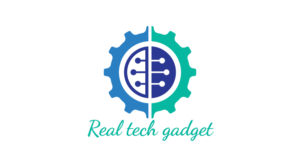Nowadays, the majority of companies keep track of their employees via their computers.
The COVID-19 pandemic and the consequent move to remote work have significantly increased the use of workplace monitoring systems.
To achieve these goals, such systems need to function efficiently, protect company’s assets as well as ensuring adherence to established laws.
However, a fragile balance exists between its application in traditional office settings and extensive domain of remote work involving surveillance software. Nevertheless, implementing surveillance has its own difficulties.
These subjects involve abiding by laws regarding employee monitoring while balancing staff privacy rights. This exhaustive handbook probes into intricacies behind office supervision by looking at legal considerations linked with tracking technology as well as ethical issues related thereto.
An Overview of Employee Monitoring in the Workplace
Nowadays employers cannot do without watching their subordinates. Surveillance is done through video cameras or emails or keycard access or internet usage control. But why do companies put in place employee oversight and what does it help accomplish? The focus of workplace surveillance is to ensure that employees concentrate on their duties during working times.
Besides, it offers defense against unethical/inferior conduct, ensures safety from leaking confidential information and enhances result-based management.
While there are many benefits associated with surveillance it remains a delicate balance between what employers can see and how they should expect their employees’ privacy not be violated.
Employee Monitoring Software: A Resource for the Digital Age
Monitoring software acts as a great assistant for bosses who want to know about
the workers yet avoiding the same degree of invasion.
It also utilizes computer code driven analytics together with monitoring methods which track activities engaged on computers ,software used and online behaviors which are tracked by contemporary monitoring systems like Controlio. Controlio is one of the best employee monitoring software. Through the tool, employers can give helpful feedback that will lead to development when they monitor achievements and time allocation. It is important to put into consideration the values and objectives of an organization when choosing the best workplace monitoring software. This choice affects not only the effectiveness of the monitoring system but also organizational climate in general, as well as trust level between management and employees.
The Legal Framework Governing Employee Monitoring Regulations
Organizations must be aware of their legal implications when considering an employee monitoring system. Legal standards vary by location, but fundamentally, they are designed to protect employees from undue scrutiny while allowing employers to monitor employee behavior within reasonable parameters.
Key Components of a Workplace Monitoring and Surveillance Policy
Employers should establish a workplace monitoring and surveillance policy that clearly outlines the expectations for both themselves and their employees. The policy should state what type of surveillance will occur to justify data collection and how employee privacy will be protected. In addition, it should outline penalties for noncompliance.
Moreover, it’s important that these sanctions be clear and uniform in their application . Additionally, this must align with existing workplace surveillance laws which are meant to encourage compliant culture in organizations.
Ethical Aspects of Monitoring Software in the Workplace
The law provides a framework for what is permissible while ethics defines what is right.
How surveillance impacts on employee morale and trust should be a concern to employers. In terms of monitoring methods, data usage, limiting the surveillance at workplace etc. it includes integrity.
Employers and employees should work together in developing fair monitoring policies as well as take part in talks held about them. This may address problems and create a trust culture that grows and lasts.
Challenges of Monitoring Remote Work.
However, employers must strike a balance so that they are able to hold employees accountable without crossing into their personal lives especially when there is remote work. Thus, such surveillance aims at increasing productivity while securing resources of the organization concerned.
Specifically, through setting particular working hours; conducting checkups occasionally; and focusing more on results rather than enforcement will help control certain things.
